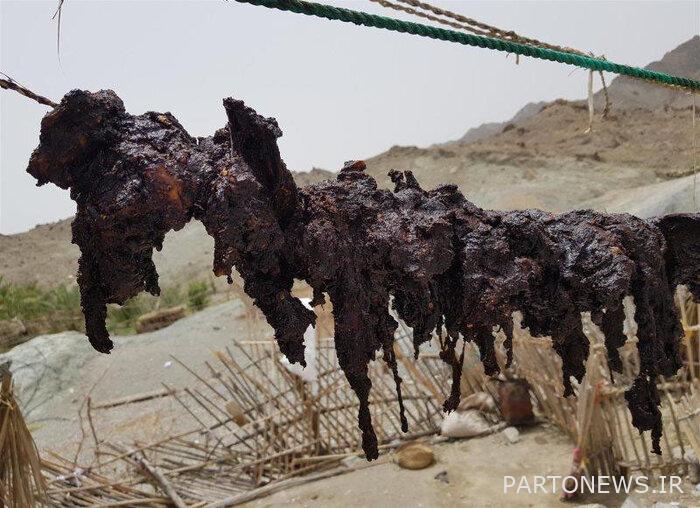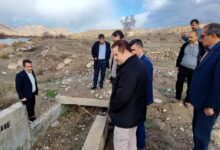Local foods have the capacity to diversify tourist attractions

The unique diversity and breadth of food culture in Sistan and Baluchistan led to 31 local food samples being registered in the list of intangible works of the country, which can be used as an important capacity in diversifying the tourist attractions in this province.
The Iranian table has been a symbol of blessing and simplicity since ancient times and has been neglected as a rare treasure that, if promoted and revived in a targeted manner, can be influential in the economic development and tourism industry of the country and every province.
To learn more about the city of Zahedan, we suggest that you read the article about sightseeing in Zahedan.
Experts see food habits as a complex whole of culinary activities, likes and dislikes, collective consciousness, beliefs, taboos, superstitions related to food production, preparation and consumption, and in a word, a great cultural concept.
They study food in relation to many other cultural concepts and define it as a meaningful activity affecting social relations.
The importance of food doubles when we know that Will Durant writes in his book History of Civilization: The problem of human food and its preparation forms the foundation of civilization, the cathedral and the temple, the art museum and the music hall, the library and the university, all are the face of the foundation of civilization, and You should have eyes and see the appearance of the “kitchen” behind.
According to the report of the World Tourism Organization, the main reason why tourists decided to travel and visit cultural destinations is firstly cultural motivations, then nature is considered as the second factor and food is in the third place, although food tourism is more important than the two factors. It is less important, but it is known among the new titles and headlines in the field of world tourism, which has a market with a very high financial turnover.
Researchers say that the share of food in the tourism industry is about 15% and every tourist spends about 150 to 200 dollars on food during his stay in the destination country.
With 2,500 types of traditional food, Iran has one of the richest dishes in the world, the way of cooking Iranian food is the third known style in the world after the Chinese and Roman cooking style.
Tourism experts believe that food tourism is an embodiment of traditional values that have been crystallized and used in the development of modern tourism.
According to them, food tourism represents an opportunity that revives and diversifies tourism, in addition, it causes local and local economic development and leads to job creation.
For this reason, food tourism can play a role in branding and increasing demand for tourist destinations, while maintaining local traditions and the diversity of communities.
In addition, it brings credit and other rewards for different regions, in addition, it should be known that food tourism is not a phenomenon that only belongs to the traditions of the past, but it is also influenced by the future.
In recent years, food tourism has been recognized as one of the ways to attract tourists, such as religious, cultural, and natural tourism.
With 2,500 types of traditional food, Iran has one of the richest tables in the world, the way of cooking Iranian food is the third best known style in the world after the Chinese and Roman cooking style. Islamic deserves a serious and significant share in the halal food market and, of course, attracting food tourists interested in experiencing new foods.
The great variety of food in Iran, which is derived from the natural, climatic and cultural characteristics of each region, has created a lot of capacity to attract food tourists.
Holding food festivals and setting up food tours to teach how to cook local dishes and increasing the number of tourists who are looking for food variety in traditional environments has led to the creation of food tourism, the development and expansion of which has received great attention in recent years.

Eating 40 food samples with one trip to Sistan and Baluchistan
In an interview with IRNA reporter, the deputy director of tourism of the General Directorate of Cultural Heritage, Tourism and Handicrafts of Sistan and Baluchistan said: Food is a part of the tangible and intangible cultural heritage of every nation, which is formed according to the anatomy and geography of that region.
Reza Ganj Ali added: Due to the climatic, weather, cultural and social diversity in the country, the list of Iranian foods is considered an important cultural treasure. Pakistani, Omani and Shahr Sokhte discoveries of 9 food samples have been registered in intangible heritage.
He continued: In the direction of branding the food tourism of Sistan and Baluchistan, unique measures are on the agenda in such a way that there is no such branding anywhere in Iran where food from several countries is cooked. , Omani and some samples of prehistoric food with a trip to this country.
The official in charge of organizing the international food festival in Sistan and Baluchistan considered it an important step to brand the province’s food in the tourism industry and said: this step will be held for the first time in October 1401 during the tourism week with the presence of four countries “residents of Oman, Afghanistan, India and Pakistan”. It happened; We hope that in line with the development of the food tourism industry, this event will expand every year with a more magnificent variety, so that soon we will see food festivals held in this province.
Tourists traveling to Sitsan and Baluchistan can eat about 40 samples of Indian, Pakistani, Omani and some prehistoric foods with one trip to this land, Ganjali, pointing out that improving the welfare and economic development of local communities in line with the goals of sustainable development , is one of the goals of holding this festival, he said: adding diversity to the tourism attractions of the province by emphasizing the variety of available food according to the taste of domestic and international tourists is another goal of holding tourism food festivals.
He continued: Yazdi, Birjandi and Kermani cuisines living in Zahedan are among the other cuisines of this region. Moreover, three of the 9 food samples discovered in the burnt city were presented at the Tehran International Exhibition by the head of the Food Tourism Federation and the director of domestic tourism of the Ministry of Home Affairs. The unveiling was done in a pleasant way and the visitors ate the food.
The Deputy Director of Tourism of the General Department of Cultural Heritage, Tourism and Handicrafts of Sistan and Baluchistan named one of the important programs in the agenda to name a street as “Food Street” next to Emdad Zahedan Street next to the Cultural Heritage Museum with the installation of a booth for various foods.
He added: Considering that many rites, customs, traditions and customs are gradually being forgotten, holding such programs will protect the intangible heritage and prevent the dust of oblivion from settling on our lasting heritage, and it will be a way to get familiar with food. Relatives are created.

